The Ultimate Vegan (and Vegetarian) Survival Guide for Japan.
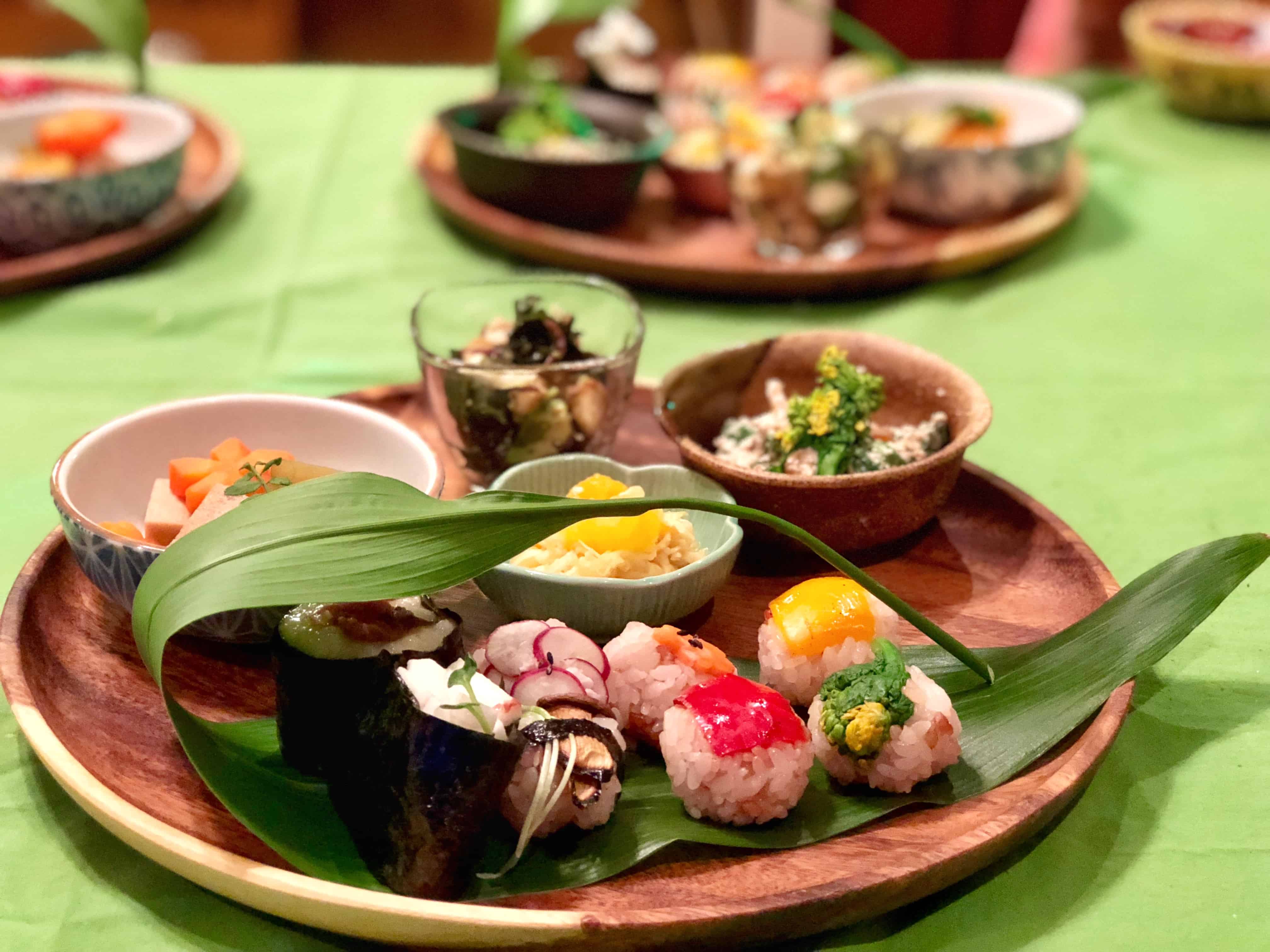
Mission frickin impossible. That’s how a fellow traveller described my quest to spend a month as a vegan in Japan, exploring the country beyond Tokyo, Kyoto and the regular tourist trail – and sampling vegan Japanese food.
I took that warning seriously and got to work: A Japanese cafe owner in Bangkok helped me write in the Kanji script how to politely ask for vegan food, a friend whipped up homemade energy bars, I packed a ton of healthy vegan snacks and spent days researching the local cuisine. I was determined to make my mission possible – and I’m thrilled to share that I not only survived as a vegan in Japan, but the journey also led to some incredible local food, beautiful friendships and unexpected culinary secrets across the country!
Also read: Why I Turned Vegan – and What it Means for My Travel Lifestyle
- Does Japan have any vegan roots?
- Vegan Japanese food to try (including Japanese vegetarian food)
- How to ask for vegan food in Japan / vegetarian food in Japan
- My favorite places for vegan / vegetarian food across Japan
- Vegan / vegetarian friendly places to stay in Japan
- The Japan vegan challenges you’ll face – and how to overcome them
- Joys of veganism in Japan
- Tips for travelling as a vegan in Japan / Japan vegetarian adventures
Does Japan have any vegan roots?

On my second night in Japan, I braved the cold of Matsumoto (in Nagano prefecture) and landed up at Itoya Izakaya, thanks to the HappyCow App. The cosy traditional wooden bar turned out to be the home of 60+ year old Itoya San, who spoke a bit of English and had handwritten several cards explaining what vegan Japanese dishes she could offer. Over an immensely satisfying meal of oshoyu-no-mi (black soybeans with rice mould), jaza chizimi (potatoes with wild leeks), soba gaki (kneaded buckwheat with soya sauce) and warm homemade sake, we chatted about Japan, the mountains and her love for cooking.
When I asked why she offers vegan options unlike most other restaurants in Matsumoto, she said that during the Edo period, before Japan succumbed to western influence, their traditional diet was largely plant-based and meat-free! It was only in the late 1800s that people started consuming beef, horse meat and all kinds of marine animals in huge quantities. Both Buddhism and Shintoism, practiced for centuries in Japan, promote compassionate eating.
In fact, many Japanese rulers had banned the rearing of cattle and consumption of meat, because they couldn’t afford to lose more forest areas to practice animal agriculture. I later read that in January 1872, an emperor called Meiji ate meat publicly for the first time, encouraging the rest of the country to follow his lead. Rumor had it that eating meat would let the Japanese become big, buff and blonde like the Europeans! Thus began the Meiji era.
Although plant-based eating has now become an alien concept in most of Japan, the Japanese still say “ita daki mas” before every meal – an expression of gratitude towards the animals and plants whose lives were sacrificed to fill one’s plate.
Also read: How My Japan Trip Changed My Impression of Japanese People
Also read: 10 Days in Japan: An Immersive Japan Itinerary for First Time Visitors
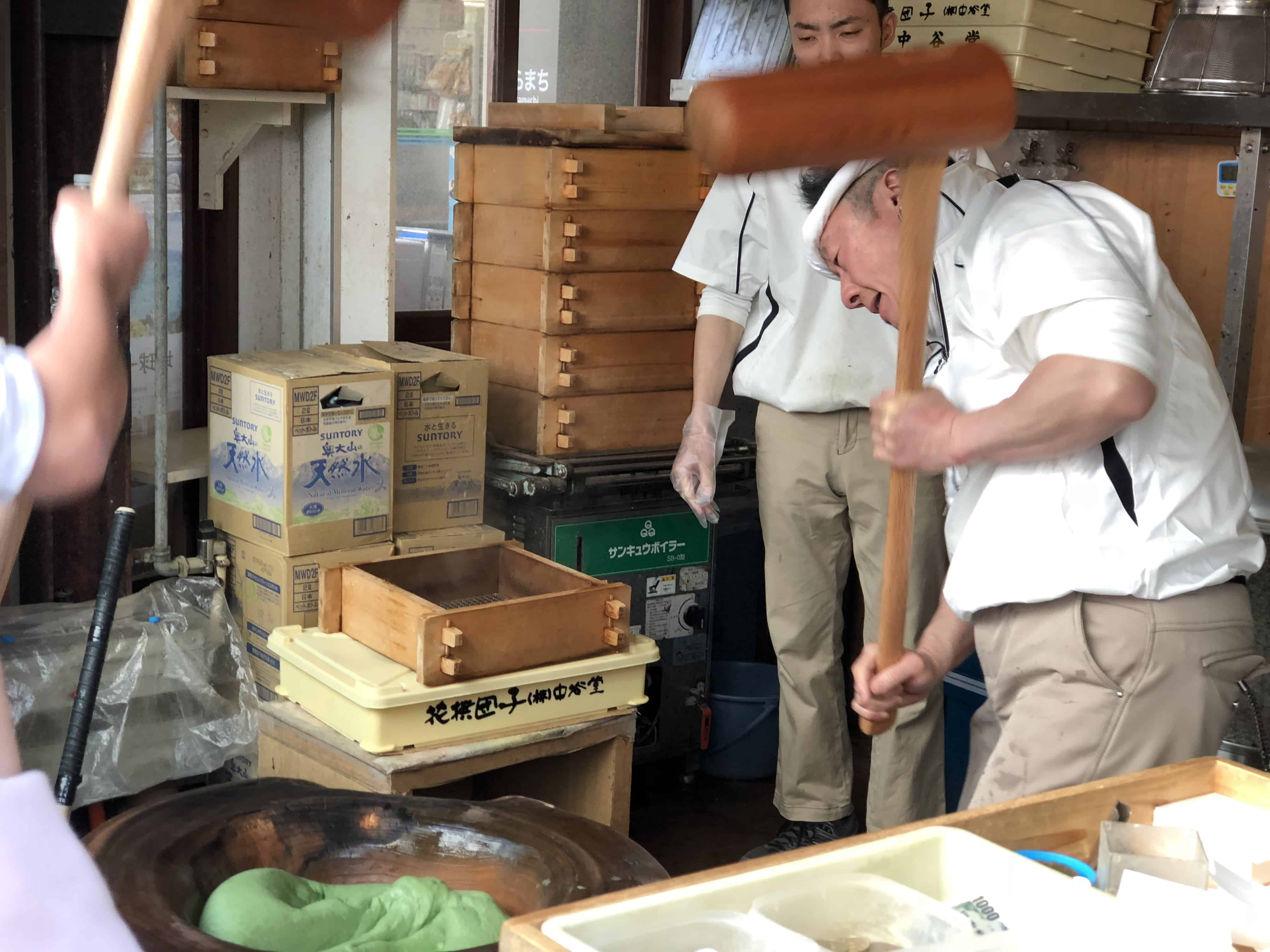
Vegan Japanese food to try (including Japanese vegetarian food)
Bento box
If I could go back and eat only one kind of vegan Japanese food the whole trip, it’ll be the delicious, wholesome, colorful bento boxes, packed fresh for train travellers every morning. I ate them even if I wasn’t getting on a train! My favorite, hands down, was the vegan bento box at Evah Macrobiotic Dining at Hakata Station in Fukuoka. The bento shop near platform 8 at Tokyo Station has a vegetable bento box too. Show them the note, just to be sure.
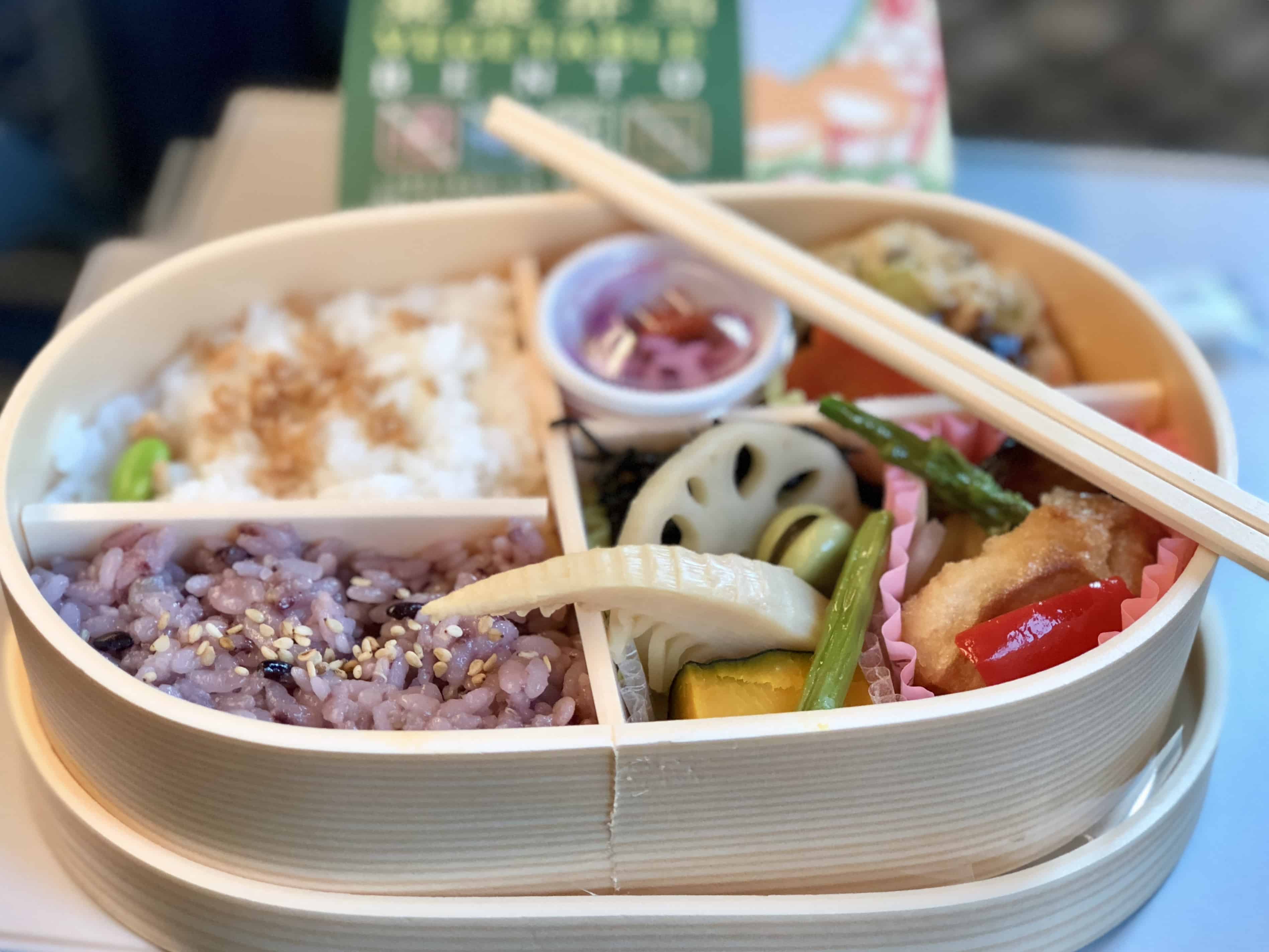
Sushi
In Japan, I learnt that it is a misconception that sushi means fish. It simply means rice with vinegar, topped with various ingredients, one of which happens to be fish. I loved standing sushi bars (you literally stand around the table eating sushi) and revolving sushi restaurants, and each of them had vegan sushi with ingredients like cucumber, pickled radish, wild mountain vegetables, natto (fermented soybean) and seaweed. Turns out though, that even though avocado grows in Japan, avocado sushi is a California creation.
I was also surprised to learn that it is absolutely acceptable to eat sushid by hand in Japan (you need to be able to use chopsticks for everything else though!)
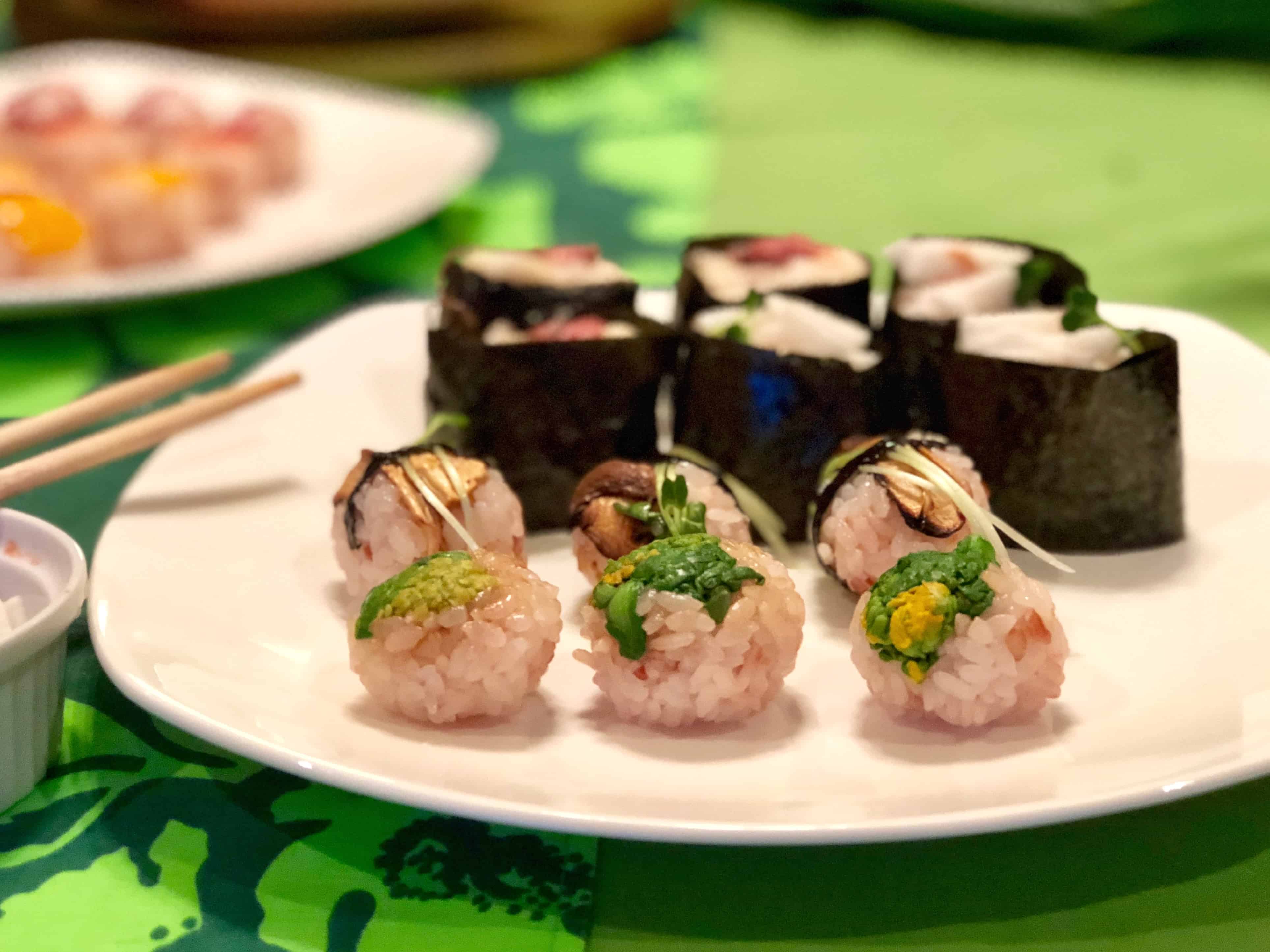
Inarizushi
Inarizushi is a kind of sushi made of sweetish deep-fried tofu, filled with Japanese sticky rice and sometimes other ingredients like sesame or sakura. Often available in supermarkets, and almost always vegan. Just check to be sure, one version contains shrimp.
Update: A member of the Vegan Japan Facebook group wrote to all the big supermarkets to ask if their inarizushi was vegan. All of them said it contained fish powder 🙁 Unless made on order from scratch, avoid it.
Miso soup
Made from grains and soybeans fermented with salt and koji (a fungus), miso is a big part of traditional Japanese cuisine, especially as a soup. It took me a while to get used to the fermented flavor; while I found the flavor in some soups too strong for my liking, I had some delicious ones, especially in local homes in Osaka and near Kyoto. The broth of miso soups typically contains fish, but I found many people willing to make a version from scratch using vegetables only.
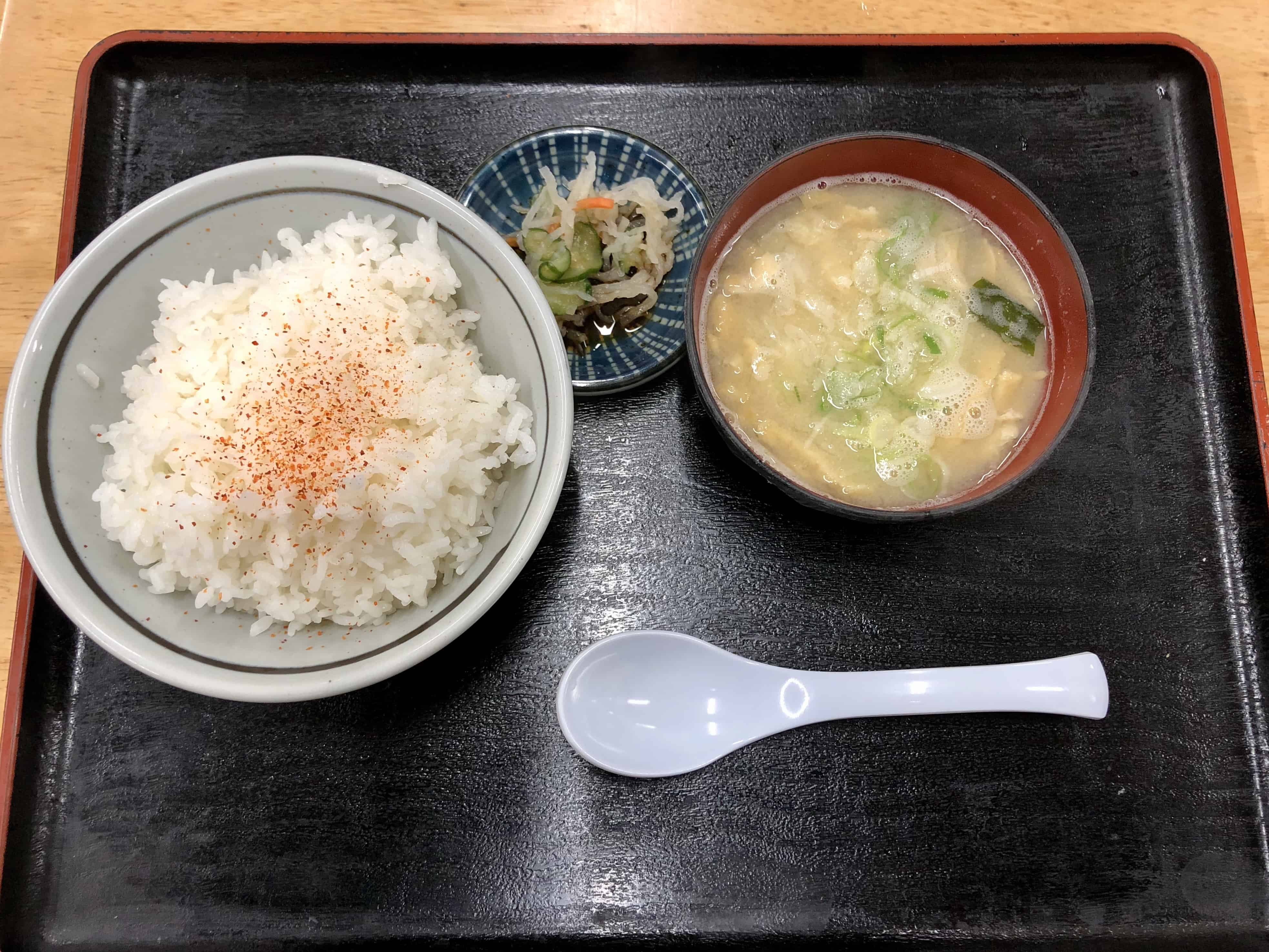
Shojin ryori
A traditional Japanese meal (and one for your “not to miss vegan Japanese food” list) inspired by Zen Buddhism is entirely vegetarian and largely vegan (it sometimes comes with egg and even fish powder, so please order in advance, specifying you want it vegan). I had a Shojin Ryori meal in Nikko, which specializes in making dishes with yuba (tofu skin) – and what a treat it was. Expensive, but so worth the indulgence.
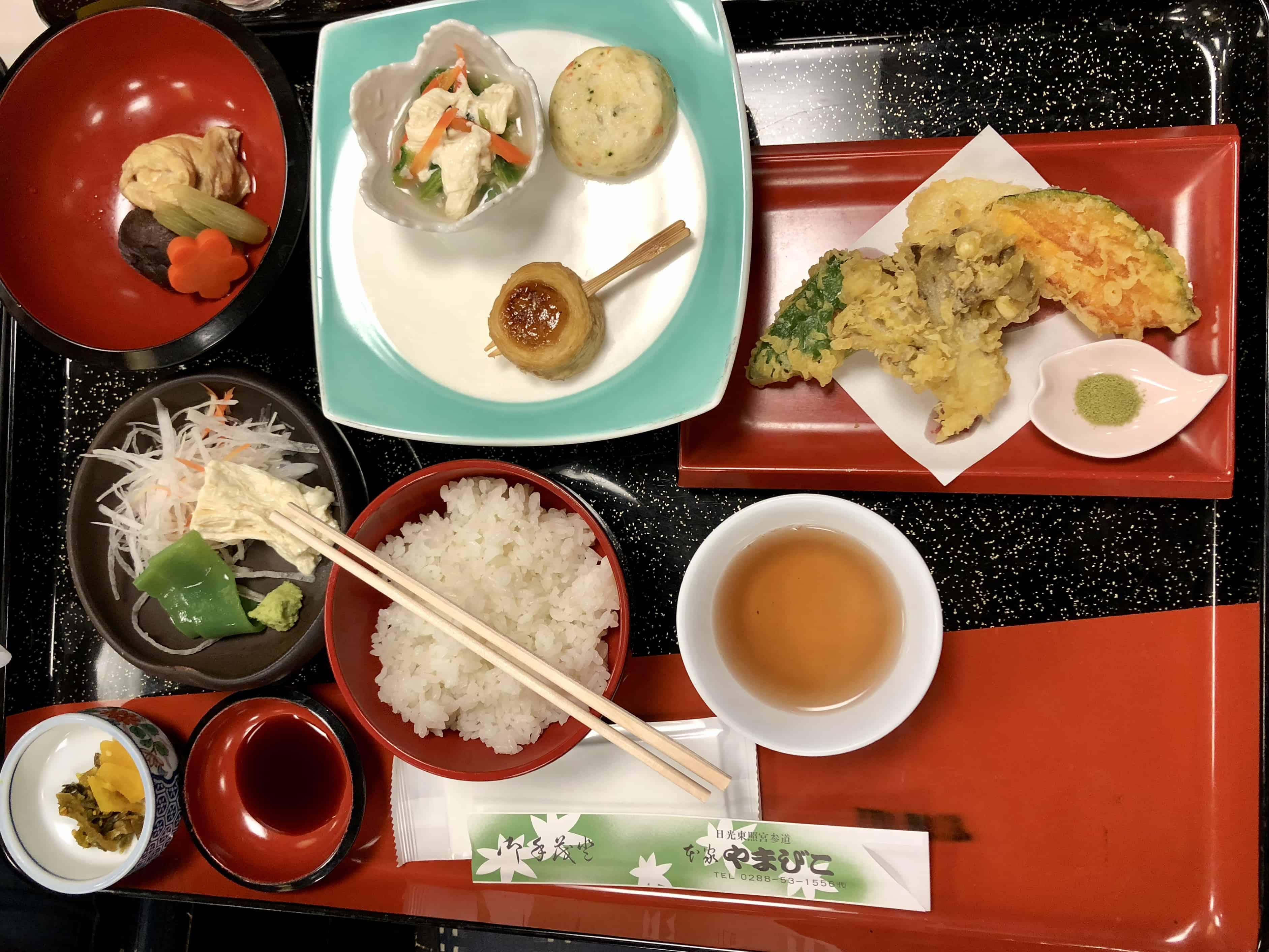
Zaru Soba, Udon noodles
Soba (buckwheat) and udon (wheat) noodles establishments across Japan serve only that, and luckily, it is possible to customise a vegan version of both, without fish dashi. Zaru soba (cold soba) noodles come without broth, typically with a garnish of spring onions and soya sauce – and although it doesn’t sound like much, it can be quite a tasty meal depending on where you eat it. Some udon places will offer a vegan version made with seaweed dashi (either off a specific vegetarian menu or on special request), mushrooms, veggies, tofu and garnish – such a treat!
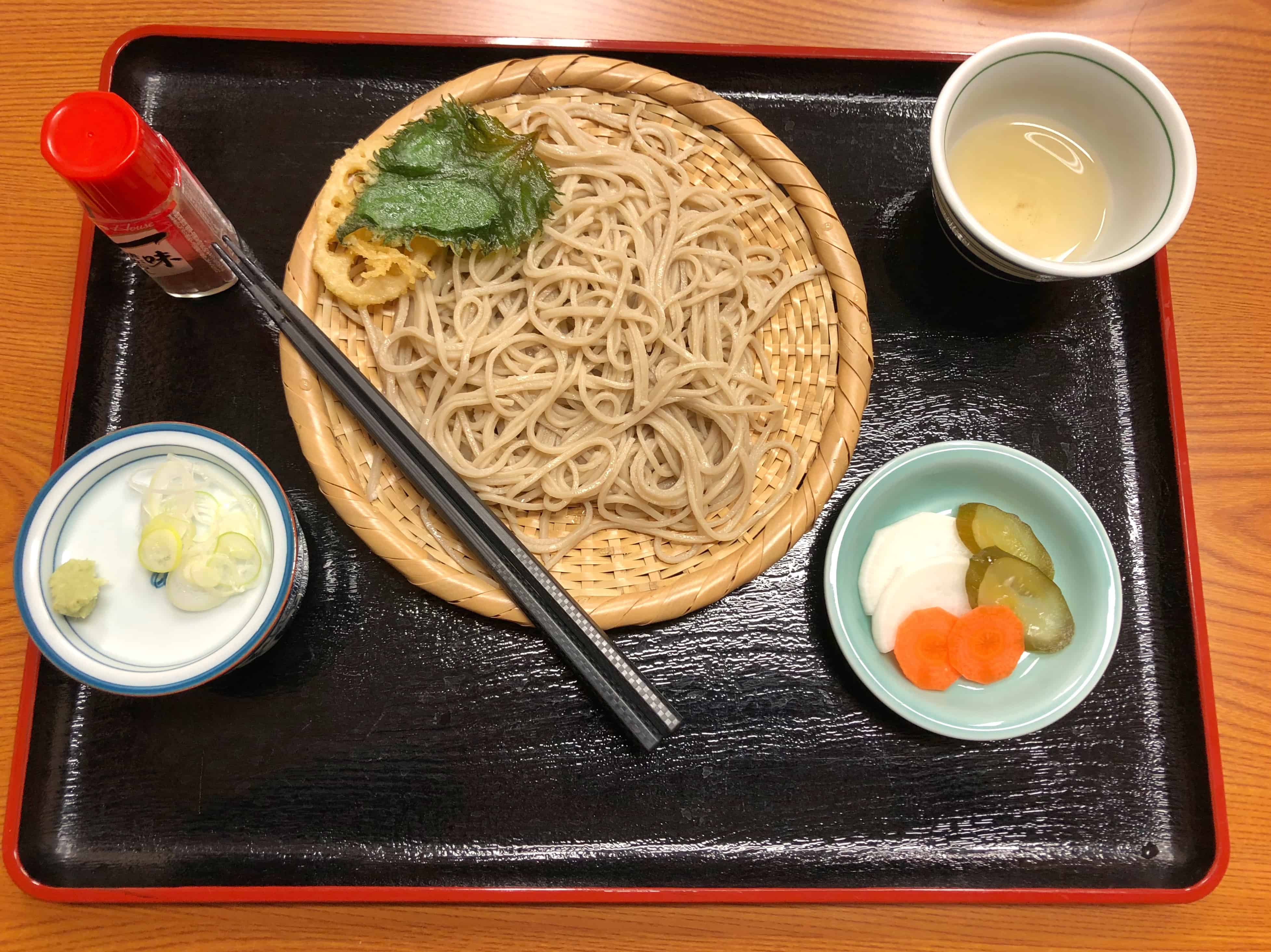
Oyaki
The cold weather and mountain terrain in the Nagano prefecture wasn’t conducive to growing rice so oyaki – soba flour dumplings – became a specialty. They are typically stuffed with veggies, fruits and/or bean paste, and mostly vegan.
Yuba (tofu skin)
Sounds strange to have a dish or meal made largely with tofu skin, but boy oh boy, are the Japanese creative!
Japanese curry
Pretty sure it’s inspired by the flavors of the Indian curry minus the spice. CoCo Ichibanya Curry House is a chain restaurant across Japan – and some locations locations have vegetarian menus offering vegan Japanese food, specifically curries with vegetables, eggplants, mushrooms, spinach etc. Please note that vegetable curries outside of the vegetarian menu tend to contain meat.
Shabushabu
My friend and famous Canadian vlogger Micaela, who’s been living in Japan for a long time now, invited us to try a shabushabu restaurant located in the basement of an obscure building – and as with all things quirky in Japan, it turned out to be quite an experience! We sat on cushions in a tatami cabin, and ordered spicy, seaweed and soya milk broths, with glass noodles, yuba, tofu and veggies. Such a feast – though you definitely need a friend who speaks fluent Japanese to be able to order it vegan.
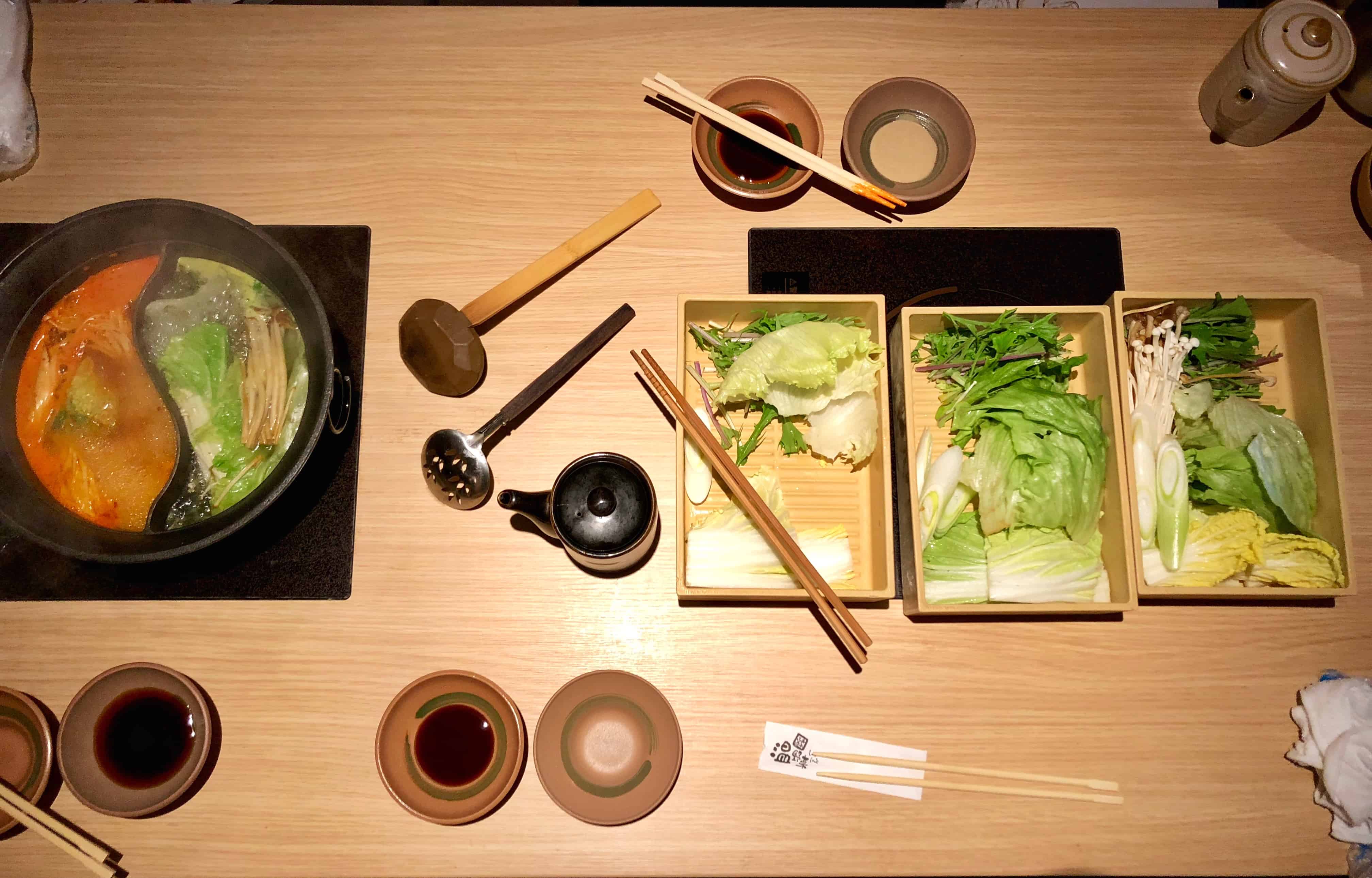
Tempura
The Japanese version of pakoras, basically. The batter is sometimes made with eggs, sometimes without, so ask before you order.
Ramen
Noodles in a spicy broth! I only found vegan options in Tokyo and Kyoto, worth a try.
Gyoza
These half-steamed, half-fried Chinese dumplings are quite popular in Japan; if you see a veggie version, go for it.
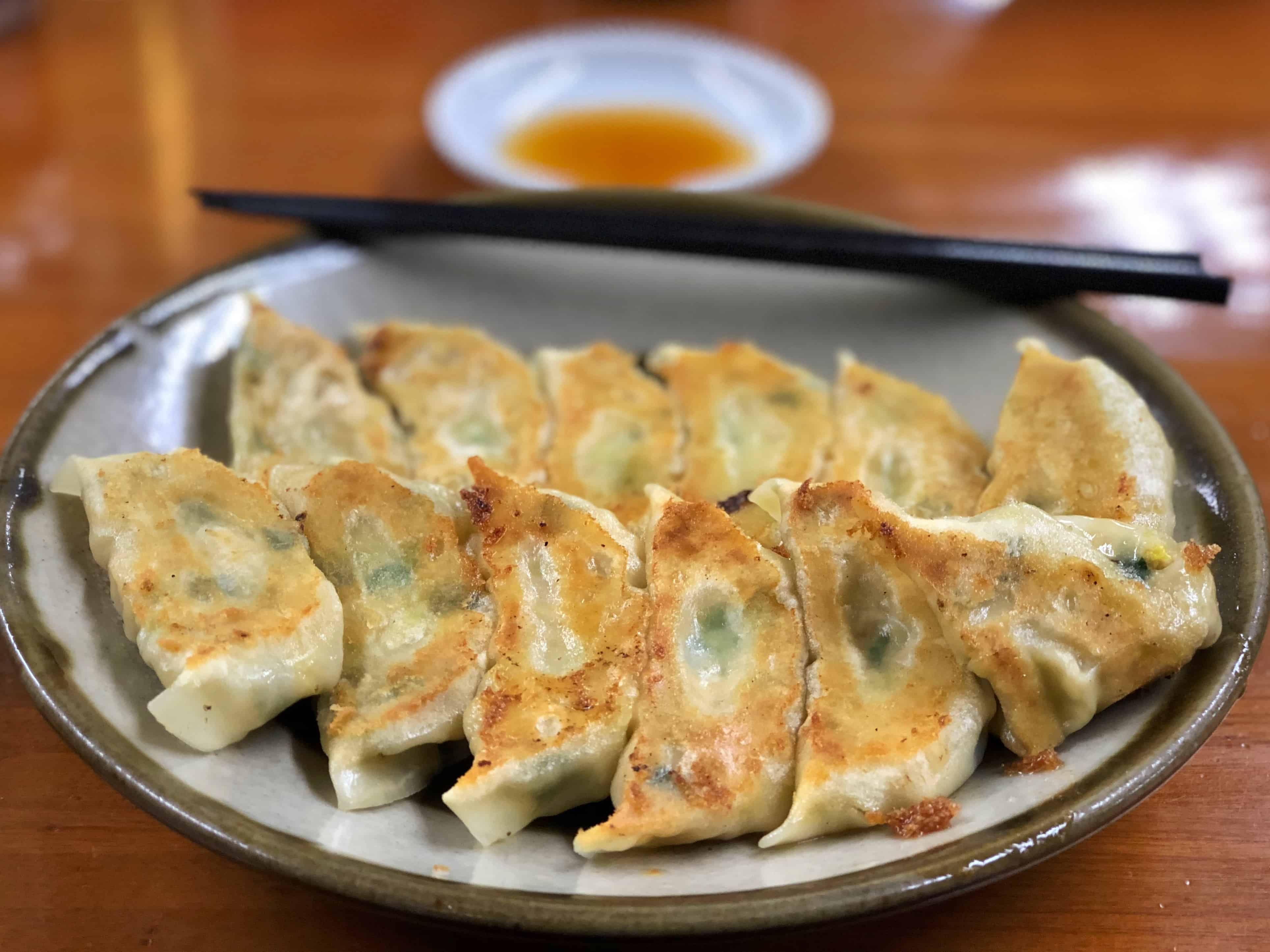
Okonomiyaki
A popular Japanese pancake – a bit like a Swiss rosti – made with flour, oil, veggies and typically eggs and mayonnaise. My host on the Kansai countryside was sweet enough to make me a vegan version; a couple of restos in Hiroshima offer one too.
Onigiri
Japanese rice balls, wrapped in a nori sheet, typically with a tiny filling inside, like red beans, a pickled plum (that one is called an umeboshi). This Japanese vegan food dish was a favorite picnic snack for one of my Japanese hosts, and readily available in supermarkets.
Natto
Fermented soy beans, available as natto sushi or as beans with rice. Super nutritious though an acquired taste, one that I never did acquire!
Koyadofu
Tofu is available in several forms in Japan, but my favorite was the koyadofu, a dried version which soaks up the ingredients it is cooked in like a sponge! Even if you don’t like tofu in your daily life, I urge you to give it a try (with an open mind) while in Japan. It’s nothing like you’ve tasted before!
Vegan Japanese food: Snacks
- Snacks sold on Buddhist temple / Shinto shrine premises: Since both Buddhism and Shintoism promote compassionate eating, many street snacks sold on the premises of Buddhist temples and Shinto shrines tend to be vegan. Show the note to find out. I loved munching on rice cakes with soya sauce and seaweed on a stick, soft soyabean sweets and crispy rice crackers with spicy seasoning.
- Soy milk and “Soy Joy Crispy” bars (white chocolate, macademia, strawberry flavors) – Vegan Japanese snacks available in most supermarkets.
Also read: Things to Know Before Travelling to Japan for the First Time
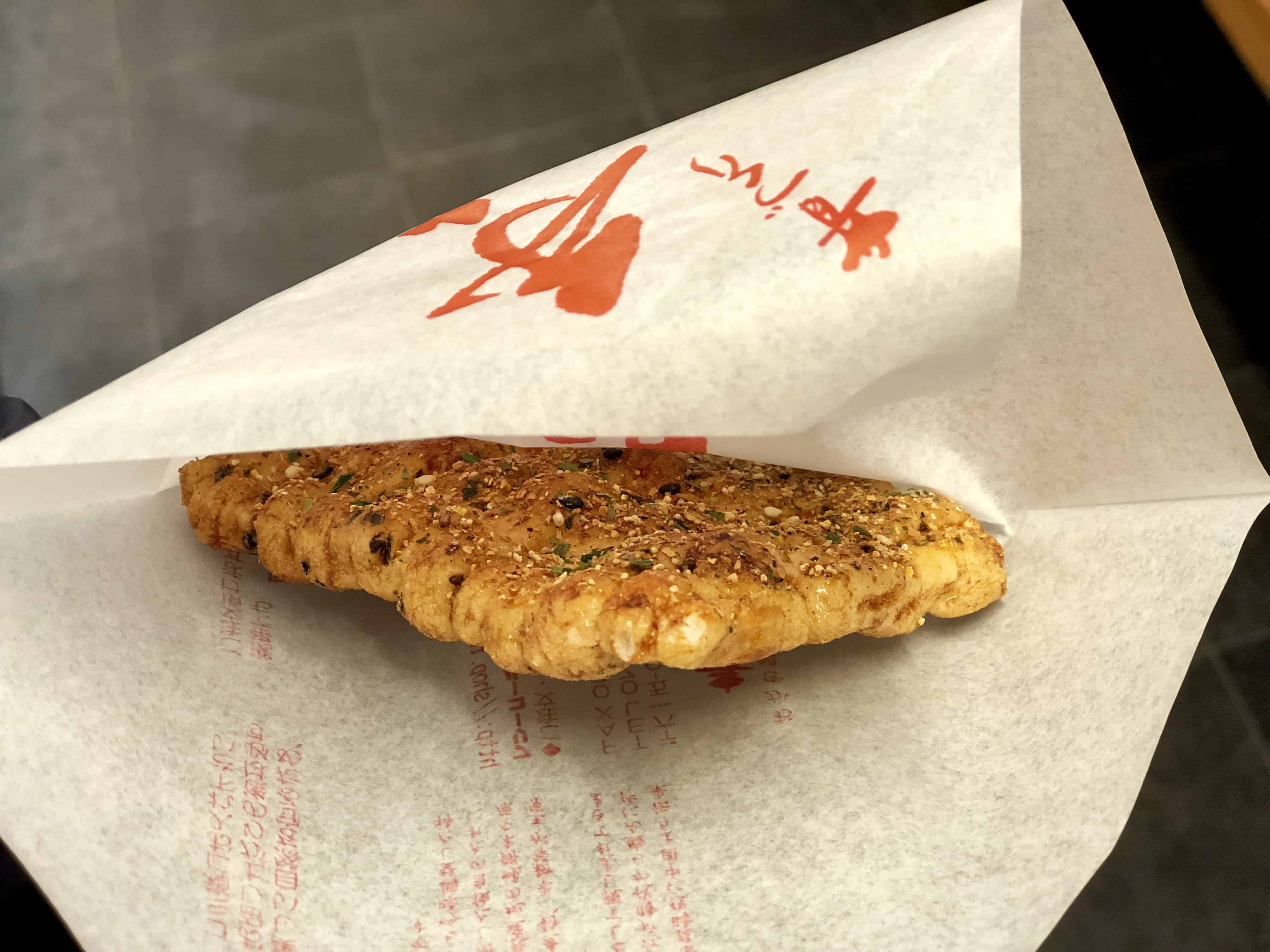
Vegan Japanese food: sweets
- Mochi: A traditional Japanese rice cake, pounded with great strength in an act called Mochitsuki, available in many subtle flavors like sakura (cherry), ume (plum), horse chestnut and more. It’s a work of art – and a perfectly light vegan Japanese sweet.
- Vegan chocolates in Japan: The Meiji 72% and 86% dark chocolates are accidentally vegan chocolates made in Japan, available in most supermarkets!
Also read: Japan Tourist Visa for Indians: How I Scored a One Month Visa
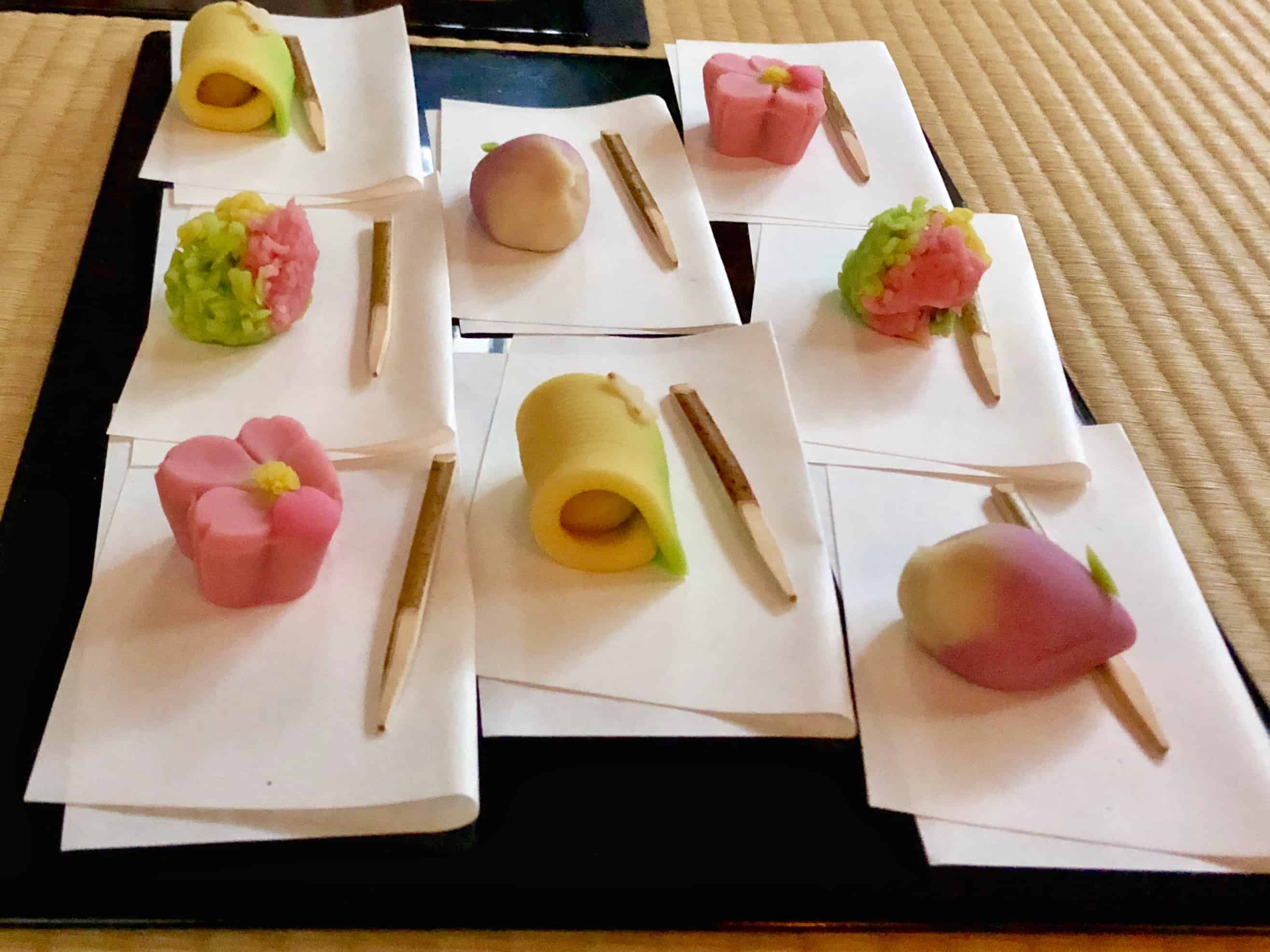
Drinks
- Matcha green tea: Though a hipster trend now, the consumption of matcha green tea began with traditional tea ceremonies in Japan, and attending one with a Japanese tea master was quite an experience.
- Sochu: Alcohol made with fermented rice, barley and potato. Pretty potent.
- Sake: Fermented rice alcohol; I liked hakuba nishi but mostly just went with the izakaya’s recommendations.
- Whisky: Well, whisky hasn’t been the same for me since Japan. Nikka has me addicted, yet it’s so rare to find outside of Japan. And Hibitchi was out of stock in Japan too! Who knew Japanese whisky could give the Scots a run for their money?!
Also read: What I Learnt Volunteering on a Remote Island in Cuba
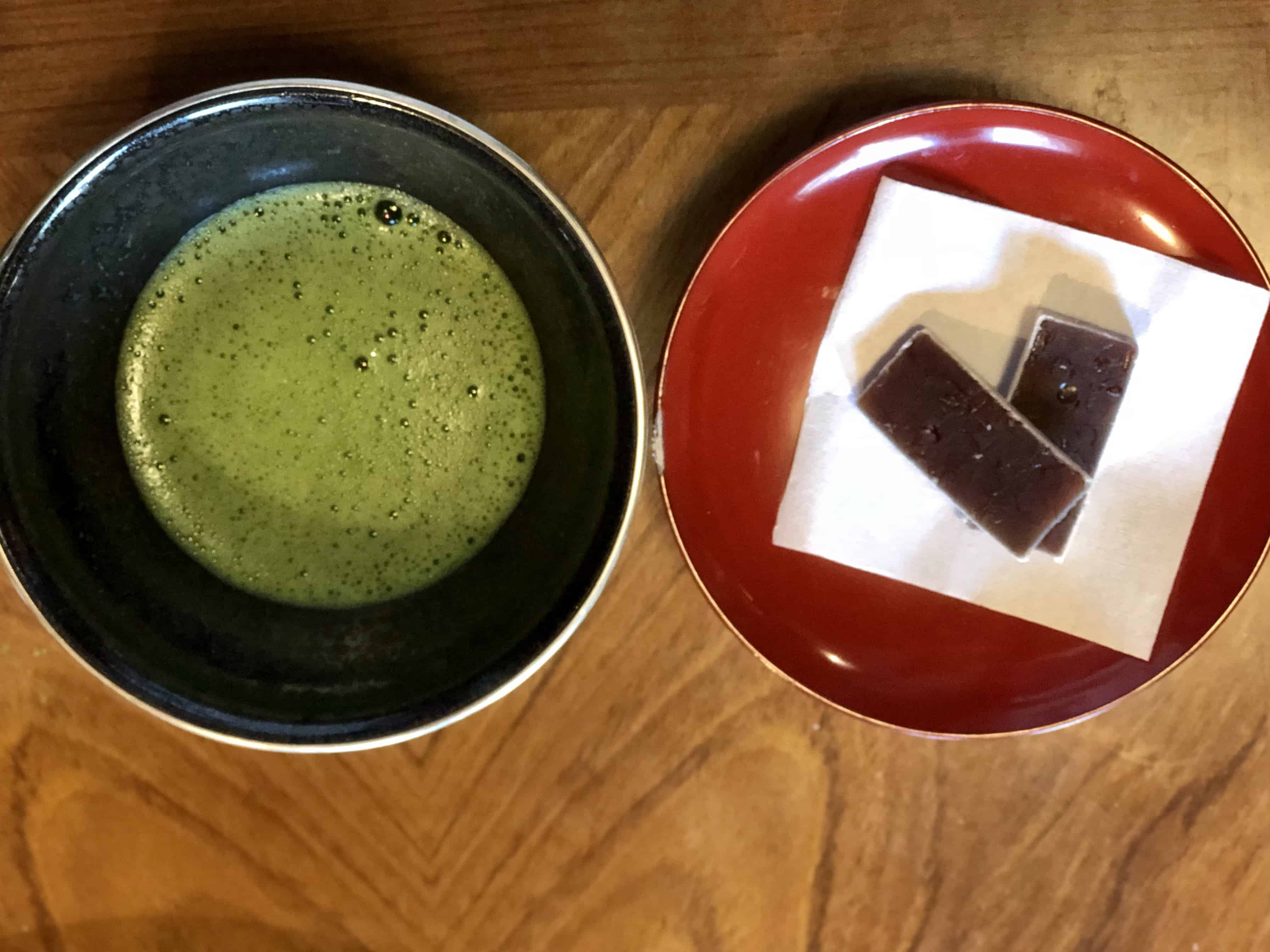
How to ask for vegan food in Japan / vegetarian food in Japan
STEP 1: Begin with telling the staff, watashi wa begetarian des (I’m vegetarian) even if you’re vegan. The point is to convey that you can’t eat most of what they’re going to offer. This will likely leave them very perplexed.
STEP 2: Use a written note explaining what you can’t and CAN eat. The Japanese language and Kanji script are complex, and Japanese culture demands that any requests be made with utmost politeness. With the help of a couple of friends, I came up with a note (photo below) that had nearly a 90% success rate for me – for it politely explains that I can’t eat meat, seafood, dashi made with bonito / katsuo (fish), milk products, eggs or honey, but that I CAN eat vegetables, mushrooms, soy beans, seaweed, cereals like buckwheat, wheat, rice, tofu, soya sauce and fruits. At this point, the staff member will usually call other service staff to understand the note, maybe even the chef if it’s a small restaurant, and give you an idea of what they could make. Accept it with a smile!
My note explaining why / what I eat vegan in Japanese

STEP 3: Whip out some basic Japanese phrases to express gratitude for the meal. Arigatou gozaimas (thank you very much) and oishikatta des (that was delicious) went a long way. I listened to the Japanese – Survival Phrases podcast to learn some conversational Japanese before my trip, and found it super helpful.
Also read: Why Travelling in Japan is Like Nowhere Else in the World
My favorite places for vegan / vegetarian food across Japan
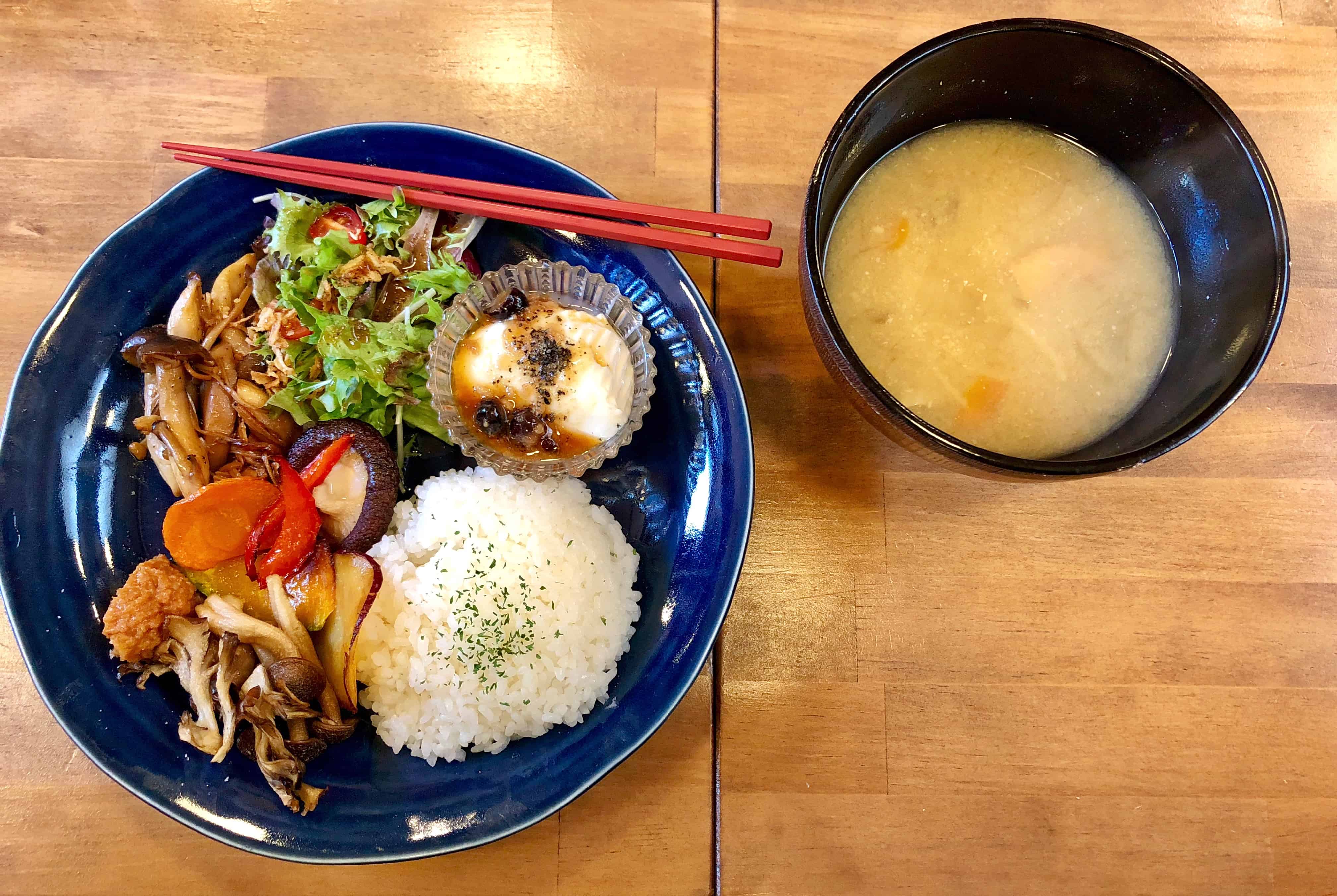
I spent my first week in Japan exploring the island of Honshu on assignment for Japan Tourism. We had a fixed group itinerary, and my guide and translator went out of their way to make sure my vegan diet was catered for. However a couple of restaurants – a small izakaya and a soba restaurant – had nothing for me when we arrived, apologizing they could do no vegan food.
Through my translator, I explained that I could eat anything with tofu, veggies, soya sauce etc, and within minutes arrived a small feast of dishes at the izakaya, and zaru soba at the soba resto.
Lesson learnt: If I wanted to continue eating vegan in Japan, I had to modify my note asking for vegan food to include what I CAN eat.
Over the other 3 weeks in Japan, I travelled independently – partly with my partner and partly solo – spending most of my time on the islands of Kyushu and Yakushima, and exploring the Kansai countryside. Here are some of my favorite food experiences around Japan:
Osaka
- Macrobiotic food in the home of Naoko and Noriko San, through Airbnb Experiences – easily one of the best meals I had in Japan! Macrobiotic Japanese cooking aims to balance yin and yang. The idea is that everything has opposing energies (black-white, male-female for example) and what we eat should be a balance of the two. Vegetables and fruits are in the middle of the spectrum, while meats, seafood, dairy and soy are pretty extreme and need balancing. Over a couple of hours, we cooked together a sumptuous meal of vegan sushi, spring shiroae (traditional creamy tofu salad), daikon radish salad, seaweed avocado salad, miso soup, and khoya dofu (freeze dried tofu) and fuki (a spring vegetable) – and ate (devoured) it together in their traditional tatami room, chatting about life, food, India, Japan, veganism and Bollywood. A most memorable and highly recommended experience!
Fukuoka
- Evah Macrobiotic Dining: Incredible vegan food at this all-vegan establishment, located in the Amu-Est shopping area of Hakata Station. Their vegan bento box, burgers and sandwiches were absolutely delightful. I would readily travel back to Japan just to eat here!
Nagano
- Hakko: Not far from the Jikokudai Park with semi-wild snow monkeys, Hakko is a local resto that specializes in fermented foods and mushrooms. A fantastic meal – though it’s better to inform them of your dietary preferences in advance, over email with a reservation.
Nara
- Totingo sushi go round: Revolving sushi with marked vegetarian options on the menu, including inarizushi, cucumber, pickled radish and natto.
- Hanata go: Like an izakaya but fancier. Has an English menu with some veg options. I tried the mushrooms in soya sauce (ask for it without butter), cold tofu in bamboo sieve and edamame, and liked it all.
- Nakatanidou: Known for its Yomogi mochi, made of a Japanese wild plant called yomogi. One of the few places in Japan that still pound mochi by hand; watch it happen a couple of times every hour!
Aso
- Train station cafeteria: What appeared to be a meagre meal of fried rice in sesame oil with pickles (an Aso specialty) and tofu turned out to be a quite a treat.
- East: A small restaurant that was befuddled by my request for vegan food, but whipped up a strangely satisfying meal with steamed rice, tofu, pickles and garnishing.
Kurakawa
- The Tofu restaurant: Tofu steak with sauce without meat and tofu ice cream!
- Ryokan Wakaba (No 10 on the map): A delightful meal of zaru soba with soya sauce, vegan tempura, some veggies and garnishing.
Yakushima
- 2F, Miyanoura: An obscure restaurant on the second floor of a souvenir shop, walking distance from the ferry terminal, served up a rather creative vegan meal made mostly with yam and tofu!
- Jiijiya, Anbo: A charming old house, run as a resto by the grandson of the family. He speaks a bit of English and was sweet enough to mark the few side dishes on the menu that could be made vegan. I opted for the chilli oil tofu and mushroom dish, both yummy.
Kyoto
- Ain Soph: After nearly 4 weeks in Japan, I really needed some comfort food and splurged at the all-vegan Ain Soph, on the softest, fluffiest pancakes, with a side of fresh fruits, homemade jams, soy whipped cream and 2 delicious ice cream scoops!
- I didn’t make a note of the other places I ate at in Kyoto, but HappyCow has 34 listings of all vegan spots in the city, so there’s plenty to try!
Tokyo
- Vegan bento box: The Bento shop near platform 8 at Tokyo Station has a vegetable (vegan) bento box; make sure you get one for your train ride!
- We’re spoilt for choice in Tokyo; start with HappyCow’s highest rated vegan-friendly spots in the city.
Also read: Is the Japan Rail Pass Worth it? A Practical Guide to Bullet Train Travel in Japan
Vegan / vegetarian friendly places to stay in Japan
Over a month of travelling in Japan, I quickly learnt that vegan-friendly accommodations made my life SO much easier. Think delightful vegan breakfasts, recommendations on vegan-friendly spots, and help in identifying local supermarket food that is vegan.
Here are some unique vegan / vegetarian friendly places to stay in Japan – based on personal experience or that of vegan friends:
Vegan / vegetarian friendly places to stay in Tokyo and Kyoto
Kashiwaya Ryokan: Located 3 hours from Tokyo in the scenic Gunma Prefecture, Kashiwaya Ryokan is a true-blue Japanese inn experience, with traditional onsens (hot spring baths). Traditional Japanese breakfasts and dinners are made with veggies sourced from local farmers, and vegan options are aplenty.
[Note that they’ve denied a solo traveller vegan meals due to the effort of cooking for one person; check before going].
Ryokan Yachiyo: Built over a century ago, Ryokan Yachiyo is an oasis in the heart of Kyoto, with traditional Japanese rooms (think tatami floors and futon beds) and baths. It is surrounded by stunning Japanese gardens that turn color in autumn and spring, and on offer are delicious vegetarian (which tend to be vegan) Japanese meals.
Minshuku Sanbiki Neko: In a low-key neighborhood in the eastern foothills of otherwise busy Kyoto, Minshuku Sanbiki Neko is an entirely vegan B&B run by a vegan Australian couple. On offer are fusion rooms with Japanese and Western influences, hearty vegan breakfasts, and advice on vegan food in Kyoto and other parts of Japan!
Vegan / vegetarian friendly accommodations beyond the cities
Koyasan Syukubo Ekoin Temple: South of Osaka, this 1000-year-old Buddhist temple in the scenic backdrop of Koya San (Mount Koya), is not just a place to stay but an experience unto itself. Koyasan Syukubo Ekoin Temple offers minimalist traditional accommodation (tatami floors, futon beds, paper screens), along with a unique chance to participate in local fire rituals, meditation sessions, and creating Buddhist text scrolls. The temple offers simple, creative, seasonal Buddhist vegetarian cuisine (typically dairy-free) – a real treat.
Kirinosato Takahara: The Kumano Kodo pilgrim route is the only World Heritage trail besides Camino de Santiago, located in Japan’s stunning Kansai region. Just off the trail, Kirinosato Takahara is an organic Japanese inn with traditional tatami rooms, an onsen fed by spring water in the nearby mountains, soothing mountain views, and veggie meals on request. A soulful experience.
The Japan vegan challenges you’ll face – and how to overcome them
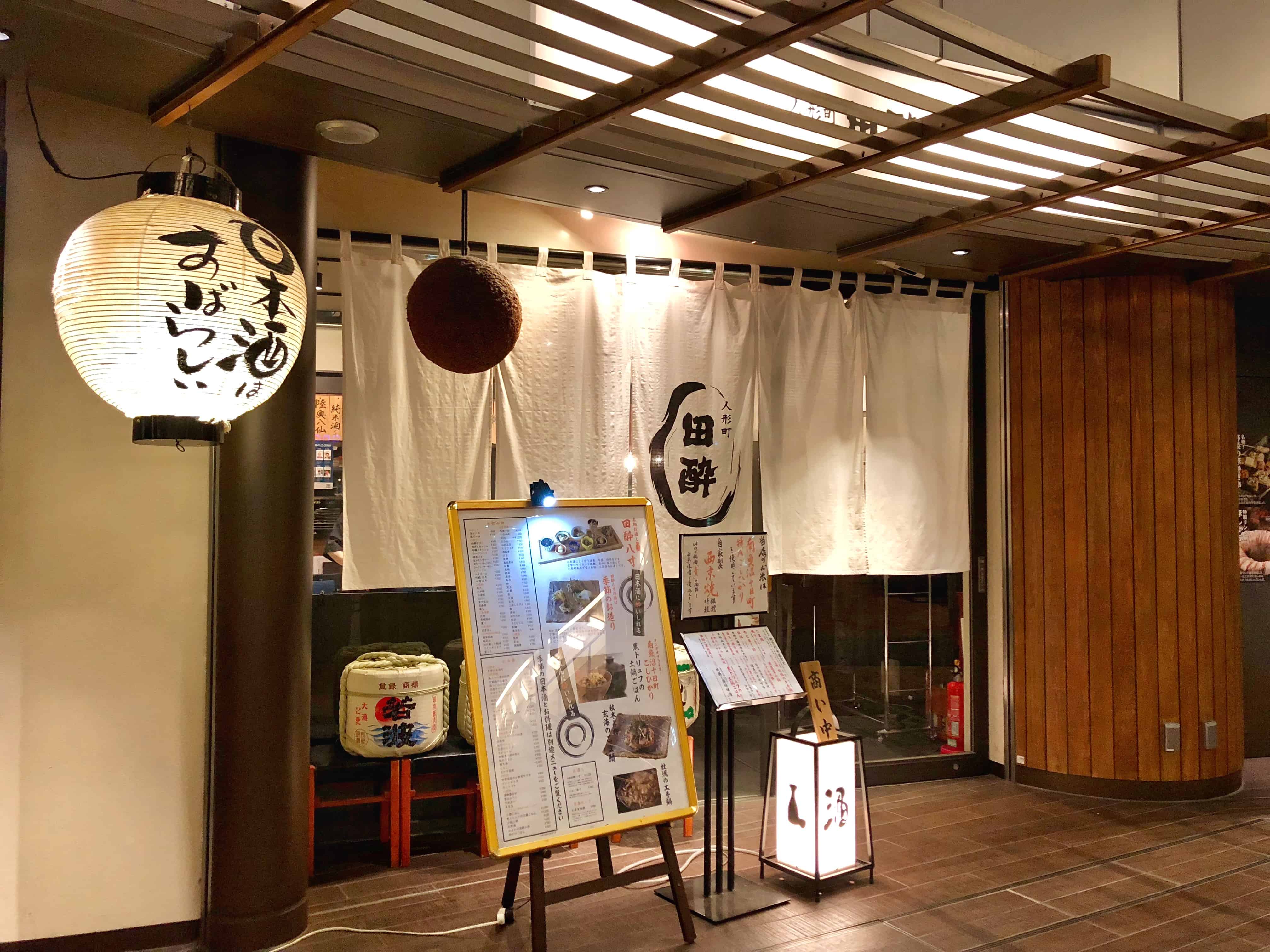
It’s not mission frickin impossible to survive as a vegan in Japan, though it helps to be well-researched and well-prepared. In popular tourist cities like Tokyo, Kyoto, Osaka, Nara and Fukuoka, there are plenty of restaurants offering vegan / vegetarian options of local dishes. Get the HappyCow App to map what’s near you.
In smaller, less-visited villages on the Japanese countryside, most restaurants and izakayas only have Japanese menus and hardly anyone speaks English. During this time, I found it really helpful to have a written note explaining what I can’t and can eat.
- Reading labels: If you’re vegan, your eyes probably hurt from all the labels you’ve been reading in supermarkets too – and Japan gives you a break from that 😉 99% of labels and ingredients are written in Kanji – and Google translate often fails to translate them accurately. Luckily, the supermarket staff often obliged in helping me translate the ingredients in freshly packed food, especially when I showed them my note. I also found the Vegan Japan Facebook group to be super helpful in identifying which products I could buy – browse through the group, especially photos, to see the range of products identified vegan in supermarkets.
- Dashi, the bane of my existence in Japan: I often came so close to getting a promising vegan meal, only to learn that the goddamn dashi (broth) was made of bonito / katsuo (fish). Why oh why? The key is to keep cool and ask if making a seaweed dashi is possible.
- Small restaurants not always willing / able to customise dishes: Although people everywhere tried to help, small food stalls and establishments were often unable to tweak a dish slightly because of pre-mixed ingredients – or weirdly enough, because there weren’t sure how much to charge for a customization! Oh Japan.
- An alien idea: Even though Japan might have some vegan roots, veganism / vegetarianism is still an alien concept in most of the country. My note explaining what I could eat sure helped!
Also read: How to Travel as a Vegan and Find Delicious Food Anywhere in the World
Joys of veganism in Japan
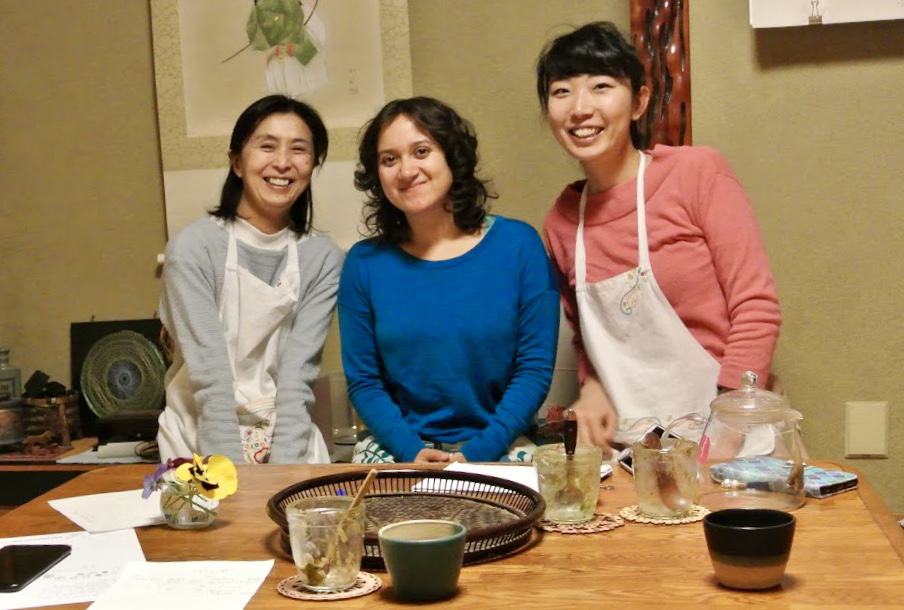
- Despite all the challenges, I have to confess that even as a vegan, I had some amazing meals in Japan!
- On average, 8 out of 10 people spent time trying to understand what I can and can’t eat – and that says a lot about the Japanese culture.
- Since Japanese cuisine is mostly raw, I happened to eat mostly raw vegan food for an entire month and could feel the effect on my mind and body. In retrospect, I’ve never felt more energetic and creative as I did in Japan.
- There’s no joy like asking about a broth-based dish in Japan and hearing that the dashi is / can be made with seaweed. A joy you’ll relate to only after travelling in Japan as a vegan / vegetarian.
- It’s worth engaging in conversations around veganism when locals get curious. When I checked in to my ryokan-style guesthouse in Tokyo, the host told me he wasn’t familiar with vegan food and lamented that he couldn’t offer me any breakfast. But the next morning, as I was stepping out for breakfast, he said he googled for ideas and had whipped up a vegan tofu steak and miso soup made with seaweed dashi (broth) for me! He was so stoked by his little experiment that he decided to add a vegan option to his breakfast menu.
Also read: Secrets Behind Some of Japan’s Most Intriguing Traditions
Tips for travelling as a vegan in Japan / Japan vegetarian adventures
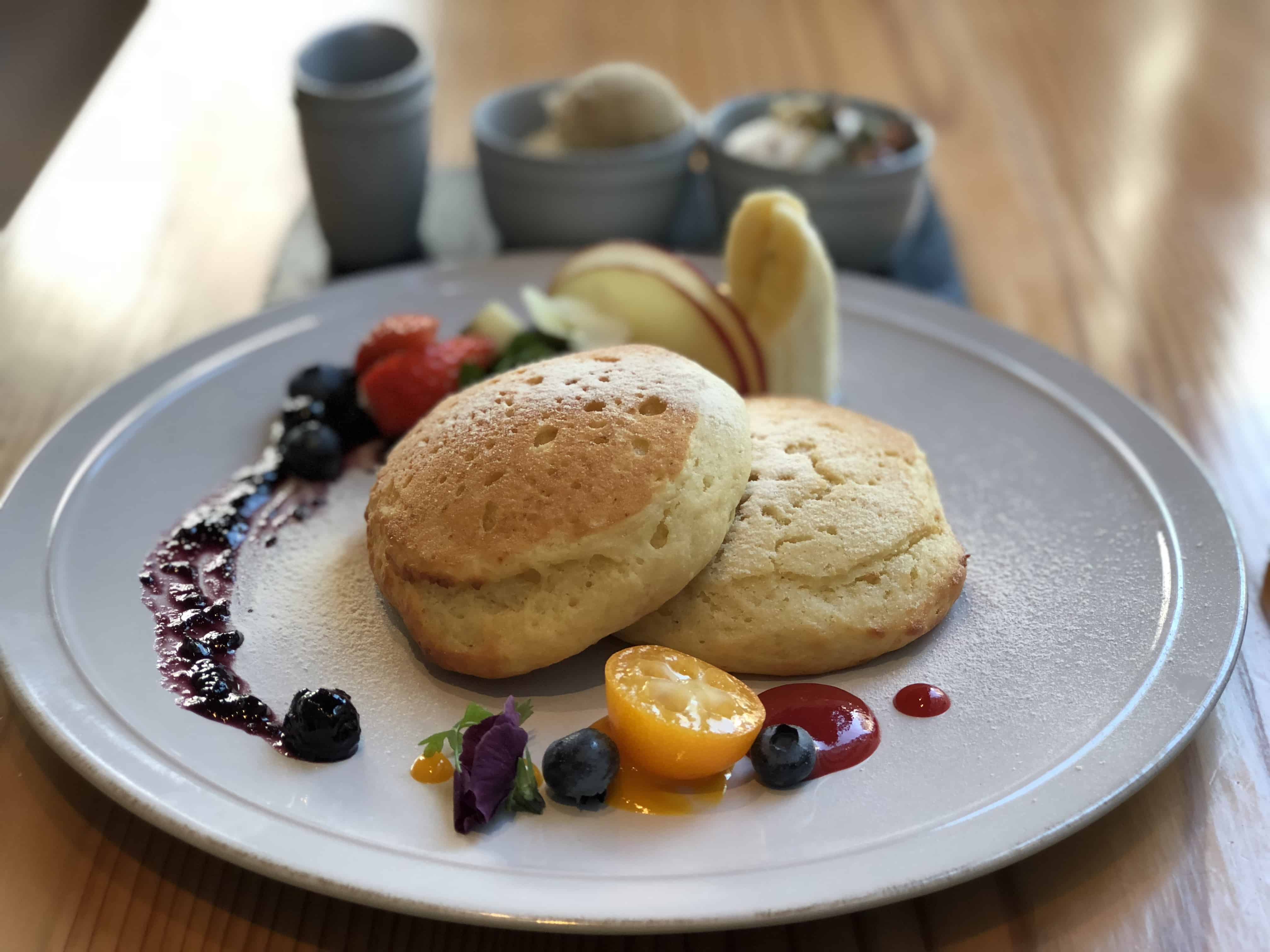
- Get the HappyCow App: Especially in cities frequented by tourists, like Tokyo, Kyoto, Osaka and Nara, you’re sure to find some amazing food based on the recommendations of past vegan / vegetarian travellers.
- Don’t lose hope if you find no vegan listings on HappyCow / TripAdvisor / Google: I was extremely skeptical of survival, but had some amazing food in / around Aso and Yakushima, even though Google returned no search results for vegan food in these places.
- Keep the note handy: I can’t emphasize enough what a savior the note asking for vegan food was for me. Don’t be afraid to show it all the time and ask for help!
- Join the Vegan Japan Facebook group and browse through old posts for a wealth of information on vegan food in Japan. They’re also pushing a petition for products in Japan to be labelled vegan / vegetarian, which would make life so much easier. Sign it here.
- Refer to the Is it vegan Japan website: I came across this excellent resource only after writing this blog post; it lists information on a wide range of food and non-food products available in Japan – and will definitely make life easier on my next trip to Japan!
- Carry some back-up food, especially if you plan to spend a lot of time on the countryside. I carried a ton of energy bars and quinoa flakes that could cook quickly in hot water, and often made my own avocado toasts with local avocados and bread from the supermarket.
- Vegan-friendly places you can always find in Japan: Sushi bars, soba restaurants (order zaru soba – cold soba noodles without broth), MOS burger (order a soy patty burger without cheese or mayonnaise), supermarket food (get soy joy bars, soy milk, onigiri, chocolates).
- Ingredients you can always find in Japan: Rice, tofu, spring onions to garnish, soya sauce, chilli seasoning. It doesn’t sound like much, but sometimes the most meagre meals turned out to be surprisingly delightful.
- Learn from the experiences of past travellers: Some blog posts really helped me build my confidence to travel as a vegan in Japan:
- Never Ending Voyage: Vegetarian survival guide to Japan
- Inside Japan: Being vegetarian in Japan: A survival guide
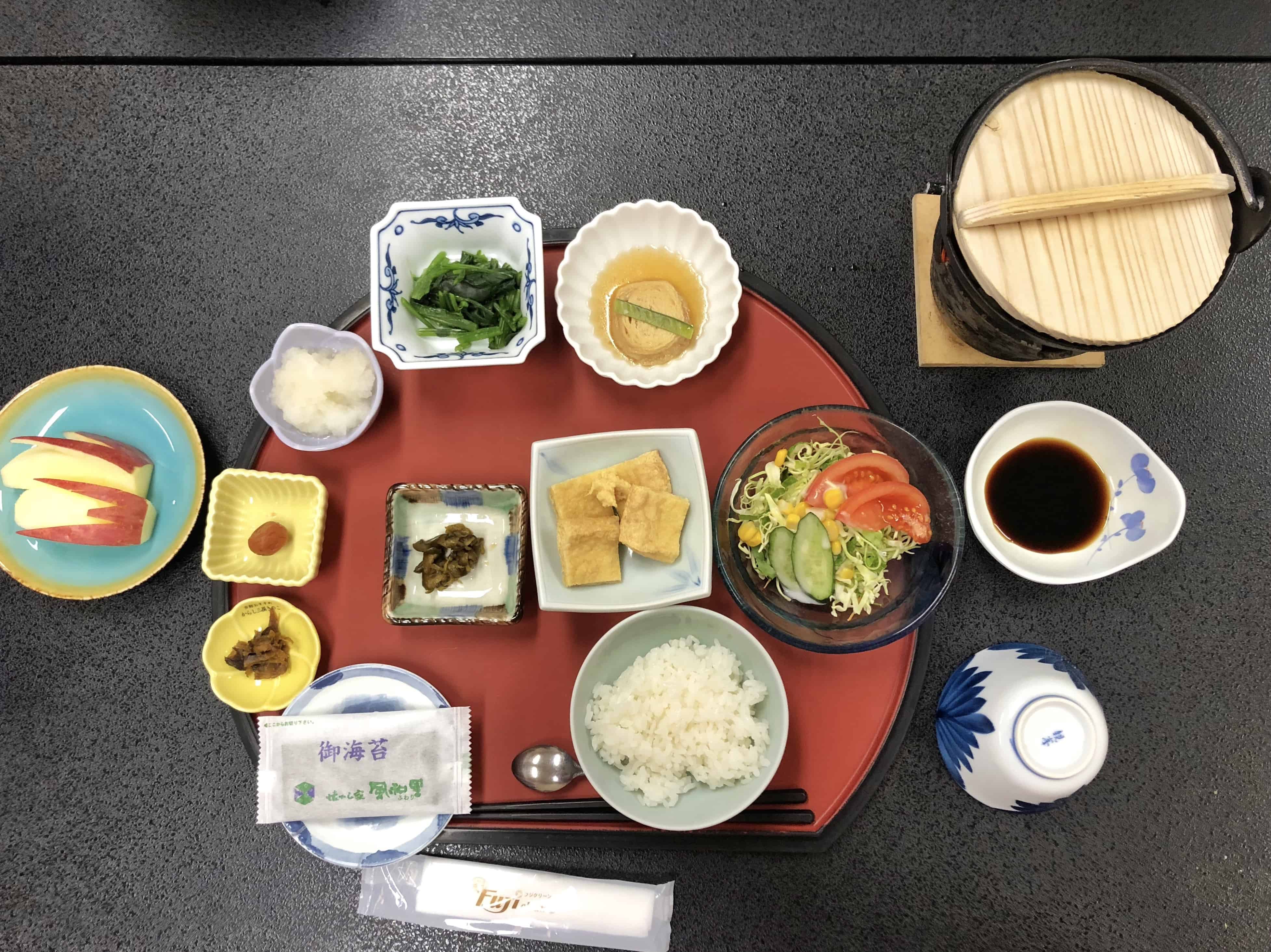
To tell you the truth, even though I had a few challenging experiences in Japan during my search for vegan food, most of my food memories from the country are incredibly positive. I still yearn for the creative bento boxes, the aesthetically presented meals, the delicate flavors and the energetic, creative feeling born out of a mostly raw vegan Japanese diet.
I hope you won’t forego travelling in Japan or worse, compromise your commitment to a plant-based diet or seeking out local experiences. With some research, creativity and determination, it is absolutely possible to relish Japan as a vegan (or vegetarian). Ita daki mas!
Also read: Try These Cafes and Restaurants in Auroville for Divine Food!
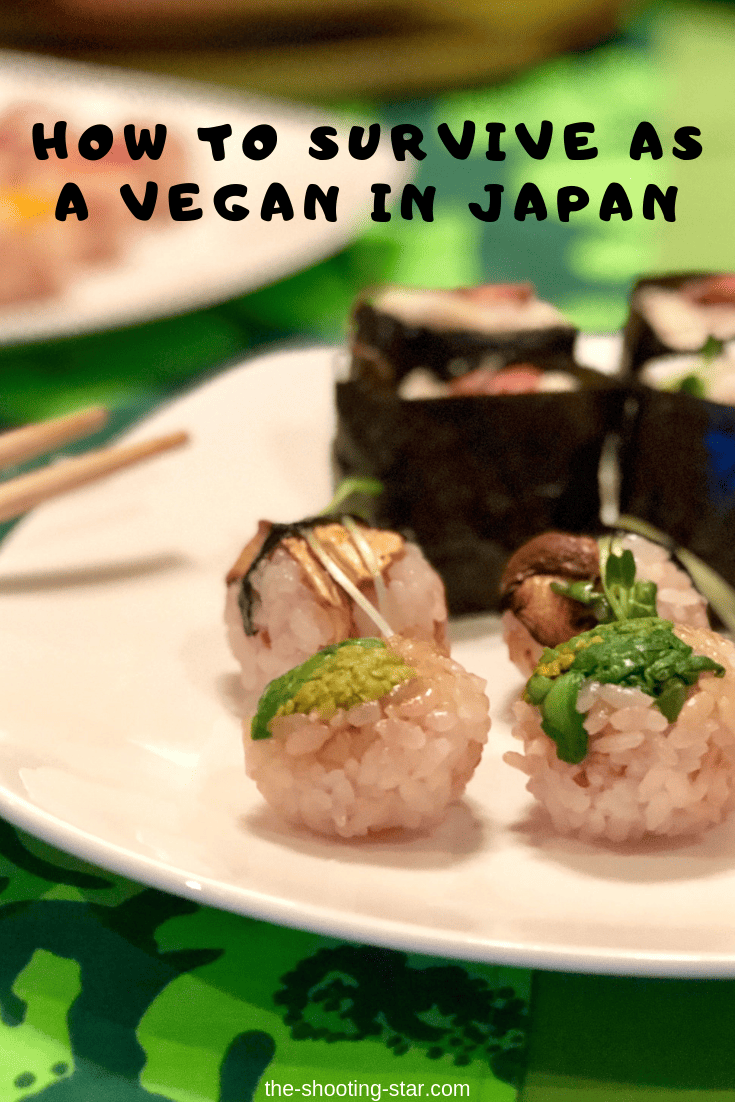
Have you explored Japan? What vegan Japanese food would you most like to try?
Join my adventures around the world on Instagram, Facebook and Twitter.
Order a copy of my bestselling book, The Shooting Star.
My recent stories about travelling as a vegan:
Travel + Leisure: A vegan trip through meat-loving countries
FirstPost: How vegan entrepreneurs are changing India’s urban lifestyle
Hi there! I’m Shivya, and I started this travel blog back in 2011, when travel wasn’t trendy, Instagram didn’t exist and AI wasn’t a thing (simpler times, I know!). I write about slow, meaningful and conscious travel – that is good for us, the places we visit, the people we meet along the way, and the planet at large. Settle down, grab a cup of tea, and read stories that remind you of the essence of travel. I’m so glad you found me!



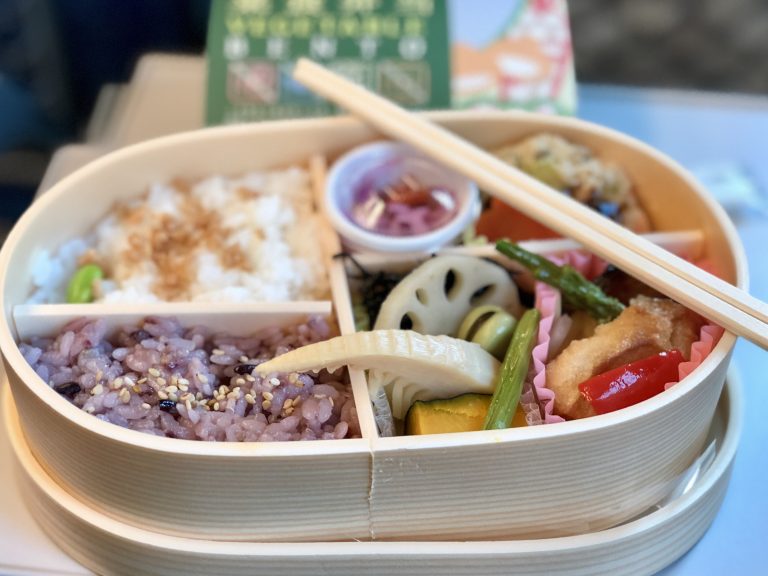
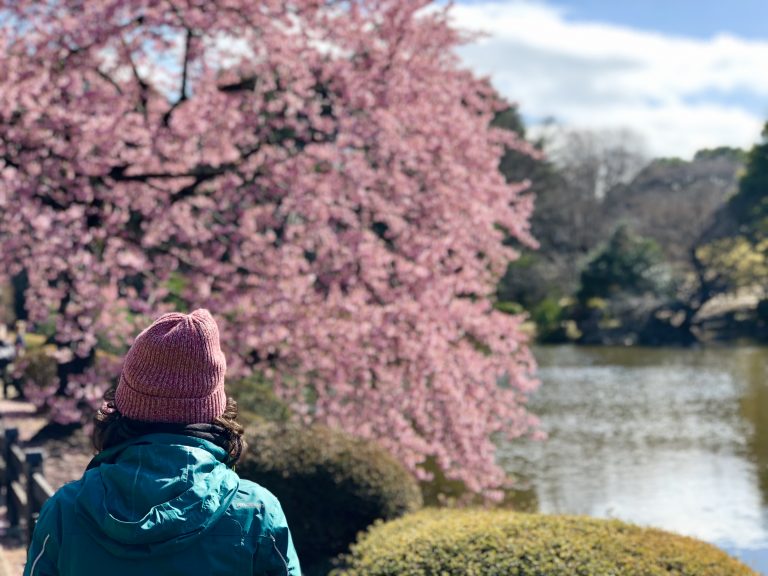


Wish I had read this a month ago! I really struggled in Japan. You might want to tell your readers that Japanese curry is not vegetarian or vegan unless it says so. It is almost always made with pork broth. Thanks for the post!
I’m sure you could use this excuse to go back 😉 I was specifically referring to CoCo Curry Houses for vegan Japanese curry, but scrolled up and realised I had forgotten to include the name. Thanks for the reminder!
great informatiion shivya , we look forward to go to Japan, and other countries. Please make a trip to China also and write about it. We need some guidance, do we need a local guide to tour Japan.
I prefer independent travel, but it sure helps to learn a few basic phrases in Japanese to get around. Planning to write a detailed guide to Japan soon, with lots of local experiences that don’t need a specific guide.
Thanks for that tip! I’m going to get a Korean friend to write me a diet letter before I head off there.
The food looks good, never knew Japan has so many vegan options.
I have never tried these even being at Japan. I will obviously try this!
Nice Artical
Thank you Shivya. A very helpful article. ‘am a vegetarian and am packing for a 2 week trip across North Hokkaido this winter. While I have survived in Japan a few times before, your blog has given me 10x confidence for my trip.
This was so helpful, thank you!
Very helpful, I only wish I could copy/paste your note in Japanese!